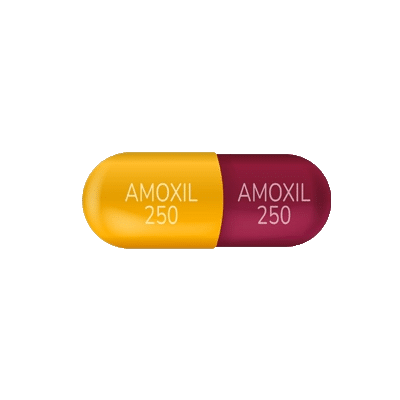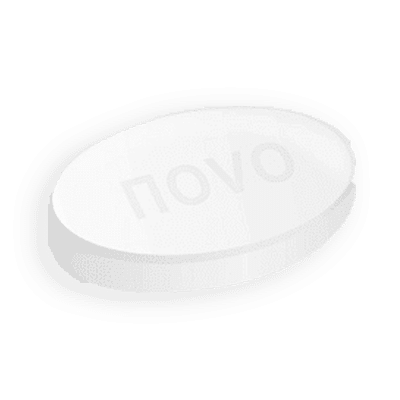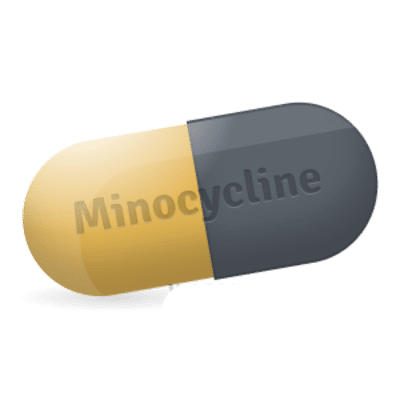Amoxil helped me get rid of persistent bronchitis. I felt a significant improvement after just a couple of days of taking it. The main thing is to stick to the regimen.

Amoxil
- Discreet shipping
- Pay with crypto
- Quality products
- BTC,
- ETH,
- USDT,
- USDC
What is it?
Amoxil is an antibiotic used to treat various bacterial infections. This drug belongs to the penicillin group and effectively fights a wide range of microbes. It is especially useful for treating infections of the middle ear, throat, skin and respiratory tract. Designed to combat pathogenic bacteria, it allows to significantly speed up recovery and minimize complications. Amoxicillin, the active component of Amoxil, is known for its high efficiency and good tolerability among patients of different age categories.
Frequently asked questions
Composition
Amoxil contains several key ingredients, each of which plays an important role in its therapeutic effect. The main active ingredient is Amoxicillin, which is a semi-synthetic penicillin.
- Amoxicillin is the main component responsible for the antibacterial effect of the drug.
- Microcrystalline cellulose - used as an inert filler.
- Sodium croscarmellose - promotes the rapid release of active ingredients in the body.
- Magnesium stearate - used as an antifriction agent, helping the tablets not to stick together and be easy to swallow.
- Hypromellose - ensures the integrity of the tablets and promotes their gradual dissolution.
These components ensure effective delivery and release of the active substance, due to which the drug quickly begins to act.
How to use?
Amoxil should be used strictly according to the doctors recommendations. Before starting treatment, it is important to read the instructions and clarify all the details with a specialist. The tablets should be taken orally with a sufficient amount of liquid, preferably during meals, to minimize the risk of gastrointestinal disorders.
- Take the drug exactly in the prescribed dosage every 8 or 12 hours, depending on the severity of the infection.
- Do not change the dose or stop taking it without consulting a doctor, even if symptoms improve.
- If you miss a dose, take it as soon as possible. However, if there is little time left until the next dose, skip the forgotten dose and continue as scheduled.
- Complete the full course of treatment, even if you feel better after a few days of taking it. This is necessary to completely eliminate the infection.
- Check your health regularly and tell your doctor about any side effects or unusual reactions to the medicine.
These are the basic steps that will help you use Amoxil most effectively and safely.
How does it work?
Amoxil works by blocking the synthesis of bacterial cell walls, which ultimately leads to their destruction and cessation of growth. This mechanism makes it particularly effective in combating various bacteria, preventing their spread and causing rapid eradication of pathogens.
The active component amoxicillin confidently penetrates into the tissues and fluids of the body, reaching high concentrations in the area of infection. This allows the drug to effectively combat even difficult-to-treat infections. In addition, due to its chemical structure, amoxicillin is resistant to destruction in the gastrointestinal tract, which ensures its reliable absorption and stable action.
Also indicative is its ability to suppress the proliferation of bacterial strains resistant to standard penicillins, which makes Amoxil the first choice in many clinical situations. It is important to understand that the effectiveness of the drug depends on strict adherence to the regimen and compliance with all doctors recommendations, which ultimately contributes to accelerated recovery and minimization of complications.
Indications
Amoxil is indicated for a variety of bacterial infections. It is used effectively in several areas:
- Upper respiratory tract infections such as sinusitis and tonsillitis.
- Lower respiratory tract infections including bronchitis and pneumonia.
- Middle ear infections known as otitis.
- Skin and soft tissue infections such as abscesses and cellulitis.
- Urinary tract infections including cystitis and pyelonephritis.
These conditions can be caused by a variety of bacterial strains against which amoxicillin is highly active. The use of Amoxil has clear advantages in cases of infections that are resistant to other antibiotics.
Contraindications
Like any antibiotic, Amoxil has its contraindications. It is important to consider them before starting treatment to avoid complications.
- Allergy to amoxicillin or other penicillins.
- History of severe allergic reactions, including anaphylaxis.
- Liver failure or other severe liver disease.
- Presence of infectious mononucleosis, which can increase the risk of skin rashes when using the drug.
- Lymphocytic leukemia, since such patients have an increased risk of skin reactions.
These points should be carefully considered by the doctor before prescribing the drug to ensure the safety of treatment.
Side effects
Taking Amoxil may be accompanied by various side effects that sometimes require medical intervention. It is important to be aware of possible adverse reactions.
- Gastrointestinal disorders such as nausea, diarrhea, and dyspepsia.
- Skin rashes and itching, signaling an allergy to the drug.
- Headaches and dizziness, which can impair concentration.
- Changes in blood composition, such as thrombocytopenia or leukopenia.
- Liver disorders, manifested by jaundice or changes in liver function.
If any of these symptoms occur, you should immediately consult a doctor to adjust treatment or change the drug.
Amoxil Reviews and Experiences
I took Amoxil for a urinary tract infection and was pleasantly surprised by the results. After the first day, the pain and discomfort were gone. True, I felt a little nauseous, but the effect was worth it.
I have been suffering from chronic sinusitis for a long time. Amoxil finally helped me get rid of constant pain and nasal congestion. I am glad that I chose this drug for treatment.



